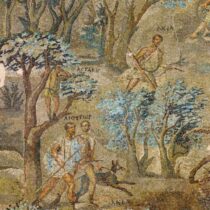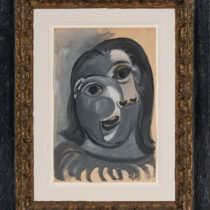Although many questions regarding the evolution of the theatrical edifice, until it attained its final stone-built form, still remain unanswered, it is beyond doubt that since the time of the great tragic poets and Aristophanes it consisted of three basic architectonical parts: the orchestra for the performance of the chorus, the amphitheatrical coelon, with rows of seats for the spectators, and the stage. There were many devices purposed to serve the various needs of the performance: some were used as vehicles for the actors to appear or disappear or to swing high up above the stagefloor, while others were producing sounds. There also existed certain prismatic, revolving apparatus, which had a different decoration painted on each of their three sides. Others, suspended from the top of the stage, were decorated with representations of the thunder. However, the list does not end here. More apparatus and relevant accessories are enumerated in the text of this article.
Scenographic Devices
13 Aug 2012
by Archaeology Newsroom
- A
- A
- A


